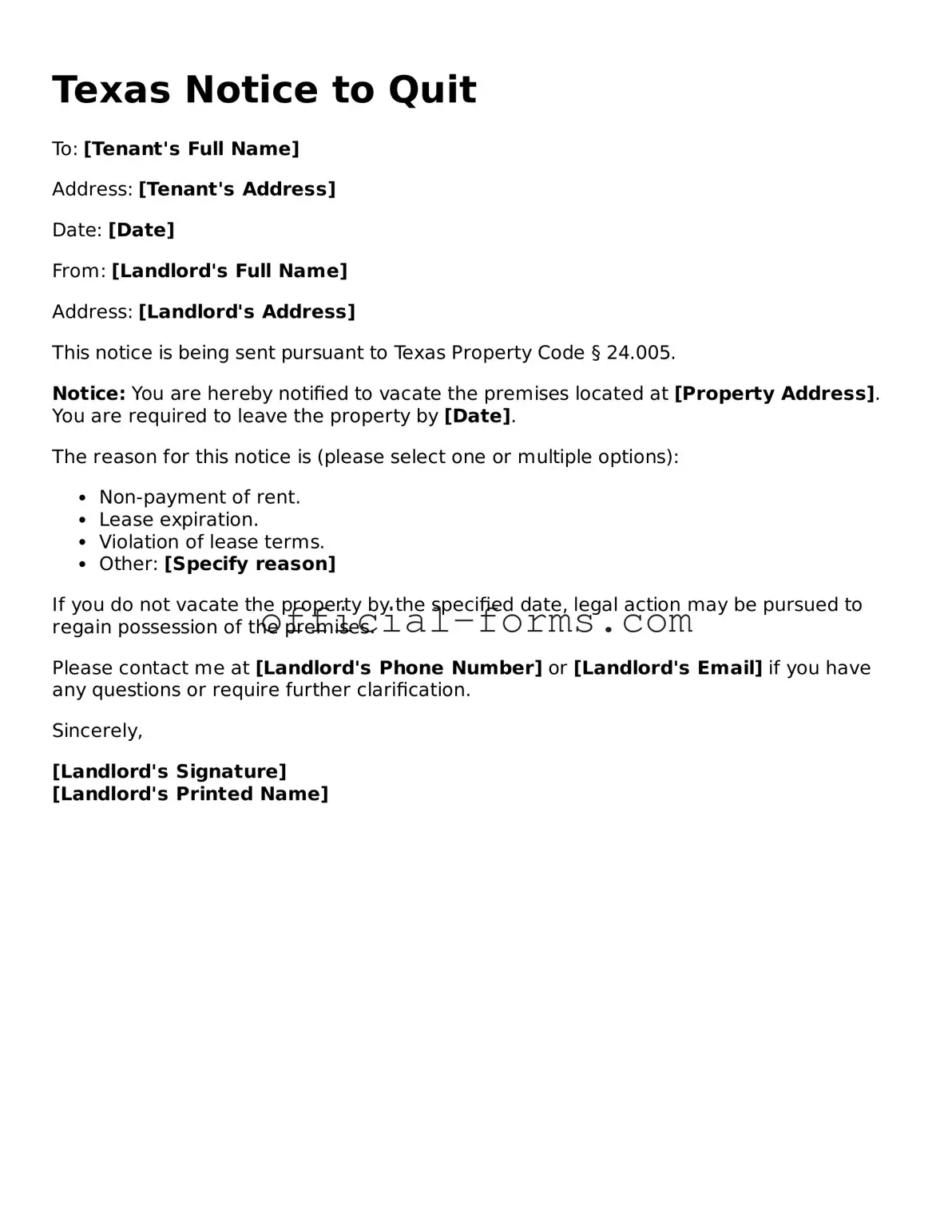Filling out the Texas Notice to Quit form can be a straightforward process, but many individuals make common mistakes that can lead to complications. One frequent error is failing to provide accurate tenant information. It’s essential to include the full name of the tenant and the correct address of the rental property. Omitting or misspelling this information can result in delays or even the dismissal of the notice.
Another common mistake is not specifying the reason for the eviction. The Notice to Quit should clearly state why the tenant is being asked to leave, whether it’s for non-payment of rent, lease violations, or other reasons. Without this clarity, the notice may be deemed insufficient, and the eviction process could be stalled.
Many people also overlook the importance of including the correct date. The notice must indicate when it was issued, as this date is crucial for determining the timeline for the tenant to vacate the premises. A misdated form can create confusion about deadlines and lead to potential legal issues.
Additionally, some individuals forget to sign the Notice to Quit. A signature is a vital component that validates the document. Without a signature, the notice may not be considered official, which can undermine the entire eviction process.
Lastly, failing to deliver the notice properly is a mistake that can have serious consequences. The Texas law requires that the notice be delivered in a specific manner, whether through personal delivery, certified mail, or posting on the property. Ignoring these delivery methods can result in the notice being ineffective, prolonging the eviction process.
